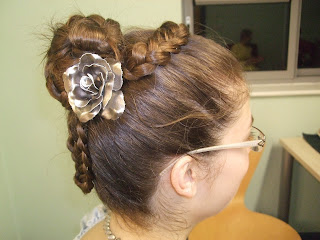However, I finally got the courage to try out one of the Historical Food Fortnightly challenges that I've been following for the past couple of years. Since the most recent challenge was Sweets for the Sweet, and I love dessert, I thought I would give it a try! I was very excited for my first challenge. I've always loved historic food and recipes, especially inspired by Ivan Day's work and research and have collected a number of late 18th and early 19th century cookbooks bursting with recipes that I would love to try...
Historical Food Fortnightly Challenge #4 - Sweets for the Sweet
It’s sugar, and maybe spice, and definitely everything nice. Test out a historic recipe for sweets, sweetmeats and candies - but don’t let them spoil your appetite!
Ginger Ice Cream
Frederick Nutt: The Complete Confectioner; or the Whole Art of Confectionery (1789)
Take 4 ounces of ginger preserved, pound it and put it in a bason, with 2 gills of syrup, a lemon squeezed, and one pint of cream; then freeze it.
Date and Region: late 18th century, England
How did you make it?
1. I made a sugar syrup with 3/4 cup of sugar + 3/4 cup of water until the sugar was dissolved and brought it to a boil. Once the syrup was made, I set it outside to cool. Generally, a gill is 1/2 a cup, but I reduced the syrup slightly so it wasn't too sweet. I think the Georgians had quite the sweet tooth!
2. I chopped up 1/2 a cup of preserved ginger to add later.
3. I squeezed the lemon and chilled it so that it was also cold when I combined the ingredients later. When making ices, it's really important to make sure all of your ingredients are cold to prevent any curdling etc.
4. Once the syrup was cold, I added the lemon, ginger and 1 pint (2 cups) of 18% cream. You could use 35% whipping cream, but I used what I had available... Chill again for a couple of hours.
5. Now, I didn't have an 18th-century sorbetiere handy, so I used my ice cream maker. I added the cool cream mixture (which did curdle slightly with the lemon juice, but not too much - this may be prevented with the higher fat content of the 35% cream possibly) to the machine and let the machine works its magic for 25 minutes.
Image from Leopoldo Costa's website.
Total time: several hours to allow for chilling + 25 minutes in the ice cream maker + a couple of hours to set a bit more in the freezer.
Total cost: approximately $10
How successful was it?
The end result was delicious, refreshing lemon ginger ice cream. It tasted really light and smooth in texture, with the tangy lemon cutting through the cream and sugar without being too overwhelmingly lemon-y. The ginger was really interesting because the candied ginger provides almost a candy-like texture to the ice cream. The sweet heat of the ginger mingles with the cold ice cream making it a very interesting, and tasty, experience! The recipe was so simple and delicious, I will definitely be making this one again!
I'm already looking forward to Challenge #6: Juicy Fruits...







